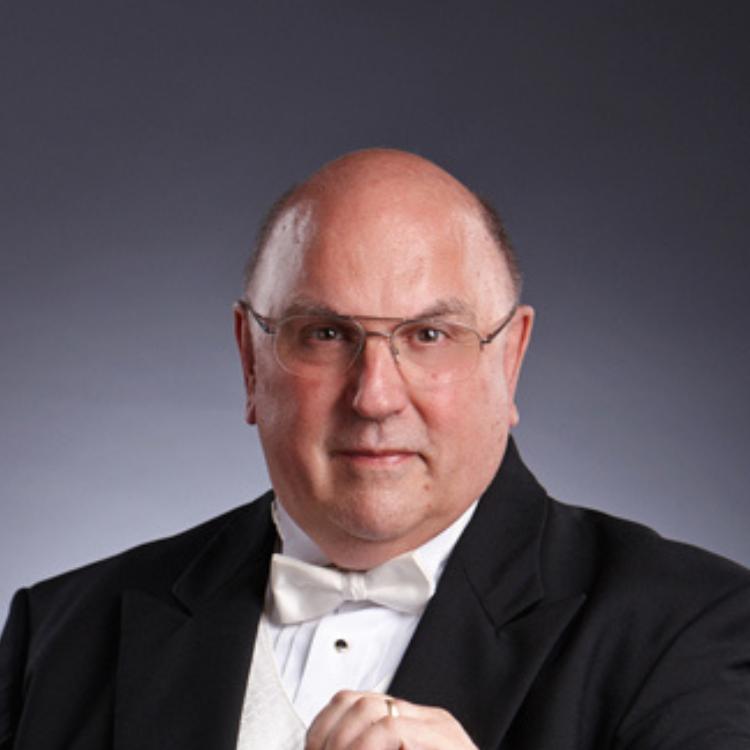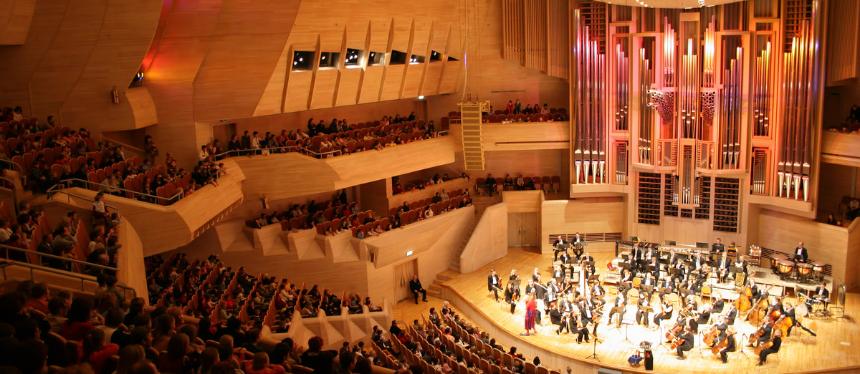Your cart is currently empty!

No. 5 – The Changing Role of the Organ in American Church Music
Historians of church music, church musicians, ecclesiologists have often endowed the pipe organ, because of its long association with the church, with sacred properties. The 14th century poet/composer, Guillaumie de Machaut referred to the organ of his time as “de tous instruments le roi”, loosely translated “the instrument of kings”.[1] This phraseology was later refined to its more familiar form by Mozart in a 1777 letter in which he wrote, “In my eyes and ears the organ will ever be the King of Instruments.”[2] The sanctified role played by the organ in worship was codified in Pope Pius X’s historic Motu Proprio of 1903.[3] It declared “that the organ be the only generally authorized instrumental music in worship”, and that pianos and “noisy or frivolous instruments such as drums, cymbals, bells, and the like” are forbidden without exception.”
That being said, the elevated status bestowed upon the organ by the church was relatively late in coming. The use of the medieval hydraulus was not approved for use in worship because of its identification with the theater and the circus. While organs had evolved by the 12th century to be useful in supporting congregational singing, unaccompanied chant was still the ideal for worship. The first modern pipe organs, powered by bellows rather than water pressure, began to appear in churches in the 14th century.
The point here is not to deny the important and noble history of organ music in the church, but to put it in context. Christians had been worshipping for a full millennium before most would ever encounter a pipe organ in worship. Writers on church music in America’s mainline Protestant denominations before the 1960s commonly implied that the pipe organ was the quintessential and only universally appropriate musical instrument for worship and always would be. The experience of the last quarter century tells us that this certainty was ill-placed.
The first documented use in America of an organ in worship occurred at Philadelphia’s Gloria Dei Lutheran (Old Swede’s) Church in 1703, but the majority of organs in colonial America were in Anglican Chapels. By the end of the 18th century, twenty churches in New England – most of them Episcopal – had installed pipe organs. Not surprisingly, denominations of Germanic stock pioneered use of organs in colonial Pennsylvania. David Tannenberg (1728 – 1804) built over 40 organs between 1765 and the time of his death – nine of which are extant today. These were largely for Moravian and Lutheran churches.[4]
The records of the Philadelphia’s First Presbyterian Church (or “Old Buttonwood Church”) provide this colorful description of the church’s worship in the first decade of the 18th century:
All stood for the singing of a psalm as the precentor held his book high. It took some time for the man to find the tune, for this morning’s psalm was of an uncommon meter. After a time, the first line was called out, and the people replied, in the usual fashion. This singing was chaotic; some sang faster, some slower, some with a decorous and rather vain trill. . . [5]
The “chaos” to which the observer referred was, no doubt, common to much colonial worship. Regular singing advocates attempted to address it through educating congregants in the basics of music, but achieving order in the observance of worship was a common problem. It was the small, cabinet-style organs being used by the Anglicans which seemed to be the most viable alternative to solve a vexing issue.
While the Puritans and other reformed denominations did not disavow instrumental music altogether, the early colonial attitude toward instrumental accompaniment for congregational singing approximated the distaste of the prophet Amos:
Take thou away from me the noise of thy songs;
for I will not hear the melody of thy viols. [Amos 5:23, KJV]
Much of the Puritan negativity was directed toward the pipe organ. Certainly, the dissension was due in part to the inbred revulsion puritans had toward Anglican pomp and ritualism, but there was also a general distaste for all things British arising from the War for Independence. The historic Brattle organ in Boston was a victim of the Puritan vitriol. Thomas Brattle (1658 – 1713) included in his will a provision that his beloved cabinet organ be installed at the Brattle Street [Congregational] Church. The Puritan divine, Cotton Mather declared that to do so would be a step toward “. . . the imposition of all the Instruments used among the ancient Jews. . . . Yea, Dancing as well as Playing, and several other Judaic actions.”[6] As late as 1790 there was not a single Congregational meetinghouse in Boston that had an organ.”[7]
An unexpected boon to organ music in the United States came on April 18, 1806, when the United States Congress passed a Non-importation Act followed by the Embargo Act of 1807 outlawing the importation of goods from Great Britain. The embargo immediately created a market for organs built on American soil. Almost immediately a significant number of native-born organ builders started shops across New England. The first of the full-time factory-based organ builders was William Goodrich (1777 – 1833). Elias Hook (1805-1881) and George Hook (1807-1880) followed, establishing the Hook & Hassyings Company in 1827 producing over six hundred instruments during the forty years the company was in business.
Henry Erben (1800-1884) was another early 19th century organ builder who exerted great influence on organ music in America. From the beginning he was recognized for the highest standards of craftsmanship. Erben expanded his customer base far beyond New England, installing many instruments in the Southeast. During the 1820s, Erben’s organ shop was producing an average of eight organs per year. In 1854, the firm produced one hundred fifty-five instruments and employed forty-five workers in its shop. Over the course of his life, Henry Erben produced over one thousand organs with installations throughout the United States and South America.
Powering this growing market for pipe organs in the first half of the nineteenth century were several factors. For New England and New York’s wealthier, elite churches, the historic place of the organ in worship was a prime consideration. Also, among the general public the pipe organ was seen as something exotic. In some instances, it appears larger instruments were purchased simply for the volume of sound they could produce. In 1808 Christ Church, Poughkeepsie, New York, purchased its first organ:
The organist of the church (in those days) was Abel Gunn, a youthful genius, with sunken cheeks and a consumptive tendency…He was particularly strong on anthems, his favorites being ‘Strike the Cymbals’ and ’Sound the loud timbrels o’er Egypt’s dark sea.’ In one of these (I have forgotten which) there is an allusion to a roll of thunder; and here was Mr. Abel Gunn’s opportunity, for at this point, he introduced a sort of organ ’obbligato’ in which, by the aid of low stops and notes of his instrument, he imitated a crash of thunder with such fidelity as to win unbounded admiration.[8]
This was not an isolated circumstance. Nathaniel D. Gould wrote in his, Church Music in America (1853), that:
By and by, all restraint was thrown aside, and the struggle was for the organ with the greatest power. The small organs were set aside to make room for thunder tones, still more and more powerful, till an organ was worthless that would not make the granite walls of a church tremble, at times, when used at full strength. And many times now, when the doxology is sung, at the close of worship, we hear such a crash of sound on the organ, that the choir [with] the whole congregation joining, could no more make words intelligible, than would be the words of a public speaker in the midst of roaring artillery…. [9]
The American organ building industry during first half of the nineteenth century was marked by continued growth with instruments becoming more sophisticated with each passing decade. Unfortunately, the number of organs being manufactured far outpaced the availability of capable organists to play them. Beginning in the 1850s, a new class of musicians – concert organists – began to draw audiences to recitals and attention in the press. The dedication of the mammoth Boston Music Hall organ in 1863 drew national attention, and its dedicatory recital featured many of the most prominent concert organists of the time: John Henry Willcox (1827 – 1875), George Washburn Morgan (1822 – 1892), Whitney Eugene Thayer (1838 – 1889), Benjamin Johnson Lang (1837 – 1909), Samuel Parkman Tuckerman (1819 – 1890), and John Knowles Paine (1839 – 1906). Not among them was the young Dudley Buck (1839 – 1905) who would become the most important American organist of the late 19th century. Buck’s influence continued well into twentieth century through his many students including: Frederick Grant Gleason (1848 -1903), William H. Neidlinger (1863 – 1924), Raymond Huntington Woodman (1861 – 1943), Harry Rowe Shelley (1858 – 1947).
The most famous of all the Buck progeny was Clarence Eddy (1851 – 1937) who would go on to become America’s first international touring artist of the organ. The popularity of Buck, Eddy, and other concert organists of their generation was reflected in the work of post-World War II recording artists such as E. Power Biggs and Virgil Fox.
The popularity of organists as concert artists did much to reinforce the view among mainline churches that the pipe organ wherever possible should be an essential component of worship. Gradually, beginning in the late nineteenth century, American colleges and universities began offering applied instruction in organ performance, and few even offered electives in church music history, hymnology, and the like. Perhaps the most visionary program was that offered by the Union Theological Seminary School of Sacred Music founded in 1928 by Clarence Dickinson, himself an esteemed, nationally recognized concert organist. Westminster Choir College, founded a year later by John Finley Williamson, would also be an important training school for church organists. Another key development for church music education was the decision in 1943 by the National Association of Schools of Music to begin certifying church music degrees and the curricula required to receive them. Once certification was possible, a number of additional schools began offering sacred music degree programs. This included Boston University, the University of Southern California, the Southern Baptist Theological Seminary in Louisville, and Southern Methodist University. Also, during this same period, schools began offering church music degrees to women. This had been out of the question when courses in sacred music were generally offered to the exclusively-male student bodies of seminary.
By 1950, with the long shadow of World War II dissipating, church attendance and church membership rolls in the United States skyrocketed. Hundreds of new churches were built to serve populations moving to the suburbs. Older established churches had to expand facilities to meet the influx of new members. This led to a surge in organ building. A golden age for church organist education got underway. Sadly, it was not to last
John Bishop, organist, historian, and longtime Executive Director of the Organ Clearing House, recalled that there were over fifty organ majors at Oberlin Conservatory when he was in school there in the 1970s. By the 1990s, the number had dropped to “fewer than 10”.[10] This was but one symptom of impending decline. Many factors would come into play. Many churches, severely affected by the global financial crisis of 2008, had to cancel planned installations of new organs and renovation of old ones. The growing popularity of Contemporary Christian Music caused hundreds of churches to replace choirs and organs with “praise teams.” Other churches found even the routine upkeep of a pipe organ beyond what they could afford. Of those years, Bishop wrote, “Many of us in the organ building trade wondered silently and increasingly out loud if we were heading toward the end of the pipe organ industry.”[11]
As we near the halfway point of 2023, there are positive signs amidst the gloom. The organ building industry did have to change, however. Large manufacturers, sometimes able to offer more modestly priced instruments, have become mostly a thing of the past:
- Estey (closed in 1953),
- Aeolian Skinner (closed in 1972),
- M. P. Moller (closed in 1993),
- The Wicks Organ Company (downsized in 2011 and now focuses on rebuilds and refurbishments).
- The Reuter Organ Company (stopped organ building 2023 to focus on rebuilds and refurbishments).
That being said, there has been a moderate increase in college music majors seeking degrees in organ performance, many seeking careers as teachers and recitalists. Also, there has been a robust increase in new organ installations from smaller “boutique” organ builders like Noack, Fritts, C. M. Fisk, Schoenstein, Richards, Fowkes, Létourneau, Buzard, and Parsons.[12] The focus of the industry is now on highly expensive, individually crafted instruments marketed to university chapels and wealthy parishes that can afford them.
As noted earlier, writers during the boom years of the 1950s and 60s tended to single out the pipe organ as the sin qua non of worship. The decline in recent years suggests that that was an incorrect assumption. Churches continue to worship and find spiritual fulfillment, some utilizing pipe organs, others not. Be assured, the pipe organ is not destined to disappear from church use. Its presence will continue to be secure in larger and especially liturgically oriented churches as well as any religious community that is lifted up by its majesty and power. In addition, I find hope in the fact that organists are becoming more flexible, building improvisational skills and harnessing the organ’s amazing ability to support music making in mixed instrumental/vocal ensembles. What history teaches us, however, is that in a pluralistic society churches must be open to ministering to broadly diverse congregations. Rigidly defining one style of music as the only appropriate one is dangerous and can have unintended consequences when congregants rebel and leave. In the end, ministry must be the deciding factor.
Best wishes and Peace,
Stan McDaniel
[4] Philip T. D. Cooper, “David Tannenberg, Organ Builder” [ http://www.davidtannenberg.com/Chapter3.htm ]
[6] Barbara Owen, “Eighteenth-Century Organs and Organ Building in New England”, Colonial Society of Massachusetts. https://www.colonialsociety.org/node/2038
[9] Nathaniel D. Gould, Church Music in America. (Boston: A. N. Johnson, 1853), pp179-180.

AUTHOR
Stan McDaniel
©2023 Stanley R. McDaniel, All Rights Reserved.
Copying or re-publication is expressly prohibited without direct permission of the author.


Leave a Reply